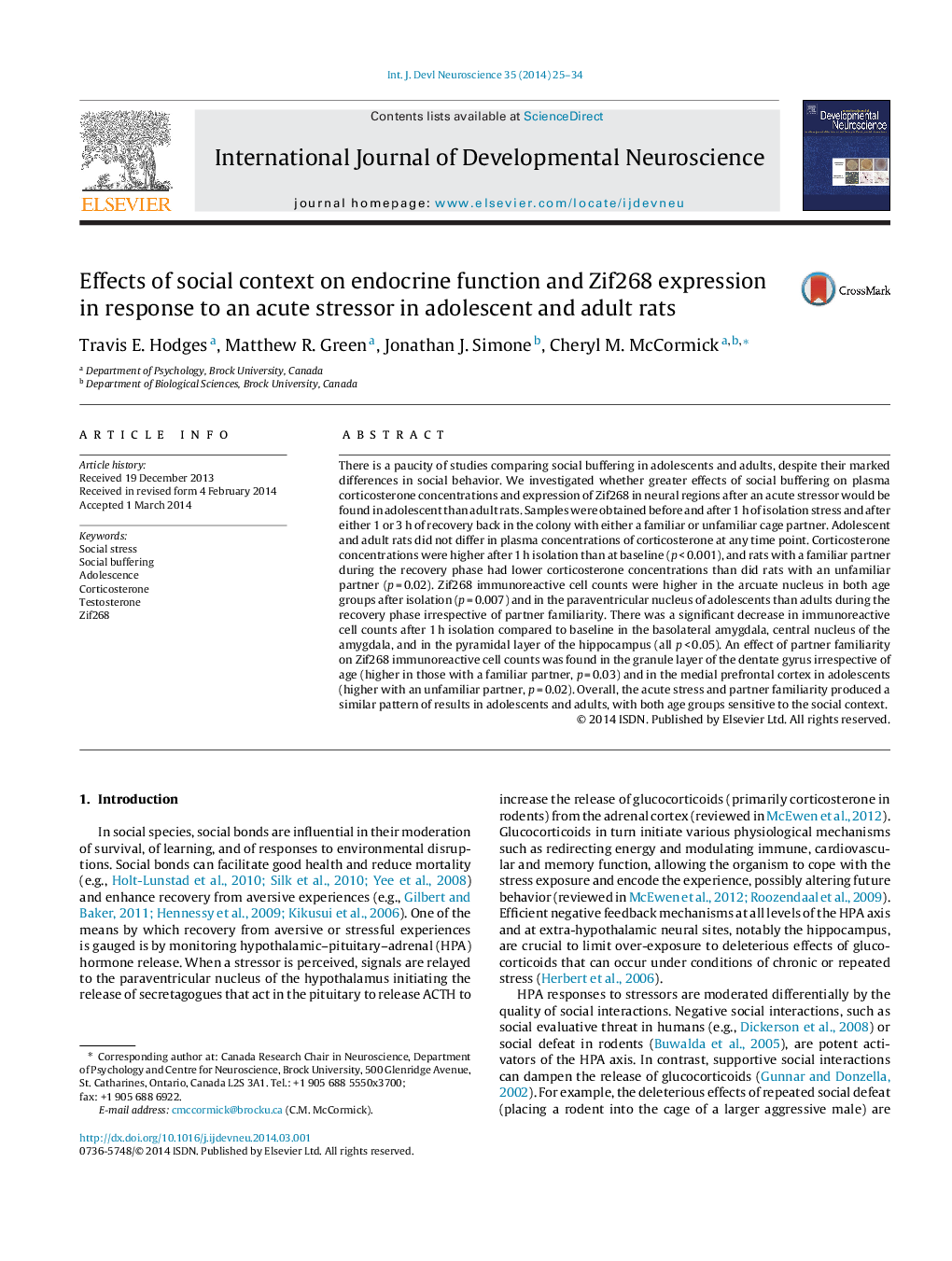| Article ID | Journal | Published Year | Pages | File Type |
|---|---|---|---|---|
| 2785991 | International Journal of Developmental Neuroscience | 2014 | 10 Pages |
•No difference between adolescents and adults in stress levels of corticosterone.•No age difference in plasma corticosterone during post-stress recovery.•Effect of social buffering the same for adolescents and adults.•Lower CORT when paired with a familiar than unfamiliar rat during recovery.•Modest age, stress, and social buffering effects on neural Zif268 expression.
There is a paucity of studies comparing social buffering in adolescents and adults, despite their marked differences in social behavior. We investigated whether greater effects of social buffering on plasma corticosterone concentrations and expression of Zif268 in neural regions after an acute stressor would be found in adolescent than adult rats. Samples were obtained before and after 1 h of isolation stress and after either 1 or 3 h of recovery back in the colony with either a familiar or unfamiliar cage partner. Adolescent and adult rats did not differ in plasma concentrations of corticosterone at any time point. Corticosterone concentrations were higher after 1 h isolation than at baseline (p < 0.001), and rats with a familiar partner during the recovery phase had lower corticosterone concentrations than did rats with an unfamiliar partner (p = 0.02). Zif268 immunoreactive cell counts were higher in the arcuate nucleus in both age groups after isolation (p = 0.007) and in the paraventricular nucleus of adolescents than adults during the recovery phase irrespective of partner familiarity. There was a significant decrease in immunoreactive cell counts after 1 h isolation compared to baseline in the basolateral amygdala, central nucleus of the amygdala, and in the pyramidal layer of the hippocampus (all p < 0.05). An effect of partner familiarity on Zif268 immunoreactive cell counts was found in the granule layer of the dentate gyrus irrespective of age (higher in those with a familiar partner, p = 0.03) and in the medial prefrontal cortex in adolescents (higher with an unfamiliar partner, p = 0.02). Overall, the acute stress and partner familiarity produced a similar pattern of results in adolescents and adults, with both age groups sensitive to the social context.
